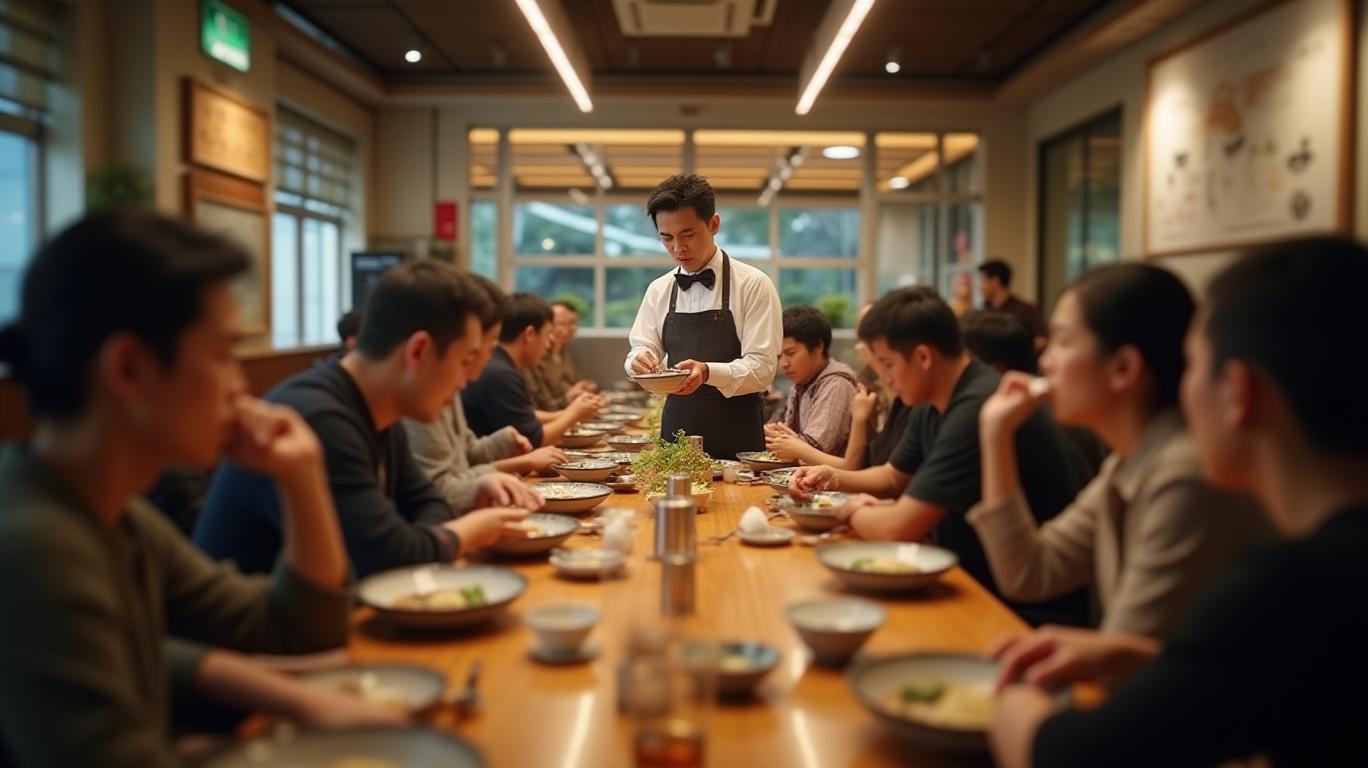Yoshiharu’s Q1 2025 Results: A Turnaround in the Making?
Yoshiharu Global Co. (NASDAQ: YOSH) has entered 2025 with a mix of progress and persistent challenges, as its first-quarter financial results reveal both promising strides and lingering profitability hurdles. While revenue surged by 25% year-over-year to $3.5 million, driven by recent restaurant expansions, the company’s operating loss widened to $1.3 million, underscoring the operational complexities of scaling a fast-casual dining brand. Amid these mixed signals, investors are left to weigh whether the company’s aggressive growth strategy—bolstered by new financing and strategic hires—can ultimately translate into sustainable profitability.

Financial Resilience and Expansion Ambitions
The quarter’s standout achievement was Yoshiharu’s stabilization of its cash position. After securing $3.56 million in financing commitments and converting $2.5 million of debt to equity, its cash balance swelled to $3.0 million by March 31, 2025—a 59% increase from the end of 2024. This not only helped the company regain compliance with NASDAQ’s stockholders’ equity requirements but also provided a critical lifeline for its ambitious expansion plans.
Yoshiharu now operates 15 locations, including a newly opened site in Menifee, California, with another under development in Ontario. Management has set its sights on Southern California markets like Boston, Seattle, and Northern California, alongside international targets such as Paris, London, and South Korea. The addition of a franchise program in 2025 further signals confidence in scaling the brand’s Japanese ramen and sushi offerings.
Operational Struggles and Cost Pressures
Despite the revenue growth, operating losses deepened, reflecting rising operational and administrative costs. General and administrative expenses jumped 44% to $1.3 million, driven by professional fees tied to restructuring and expansion efforts. These costs highlight the trade-off between growth investments and short-term profitability—a common challenge for scaling restaurants.
To address this, Yoshiharu is turning to automation. Plans to introduce kiosks and cooking robots aim to reduce labor costs, while diversifying service channels—such as expanding delivery and catering—could boost efficiency. These moves are critical, as the company’s current margins remain under pressure: its operating loss as a percentage of revenue widened to nearly 37% in Q1 2025, up from 25% in the prior year.
Strategic Governance and Investor Sentiment
The appointment of three new board members—Sungjoon Chae (architecture), Abe Lim (real estate), and Jae-Hyo Seo (legal)—suggests a focus on balancing growth with governance. Their expertise in urban design, real estate financing, and legal compliance may help Yoshiharu navigate the complexities of international expansion and regulatory environments.
Investor confidence appears to be rising. Institutional holdings, as tracked by Quiver AI, show UBS Group AG and Tower Research Capital significantly increasing their stakes in late 2024. This influx of capital aligns with the company’s improved financial footing: stockholders’ equity rose to $4.14 million as of March 2025, up from $1.2 million in cash reserves a year prior.
Conclusion: Growth at a Cost, But a Path Forward?
Yoshiharu’s Q1 results paint a nuanced picture. While revenue growth and cash reserves indicate financial stability, the widening operating loss and elevated expenses underscore the risks of rapid expansion. However, the company’s strategic investments—automated technology, franchise partnerships, and a strengthened board—position it to capitalize on long-term opportunities.
Crucial to its success will be executing its cost-saving initiatives. If automation reduces labor expenses and new locations achieve economies of scale, Yoshiharu could pivot from loss to profit as it scales. The cash buffer of $3.0 million provides a runway to do so, but investors must monitor whether revenue growth outpaces spending.
With a total asset base of $18.74 million and a focus on high-growth markets like Southern California and Asia, Yoshiharu’s potential remains compelling. Yet, its ability to deliver on its vision—without sacrificing profitability—will ultimately determine whether this quarter’s results mark the start of a turnaround or a cautionary tale in scaling a dining brand.
For now, the data suggests cautious optimism: a stabilized balance sheet, institutional backing, and a clear roadmap for expansion. The next quarter will test whether Yoshiharu can turn these assets into sustained success.


_d6548da11749819995064.jpeg)







